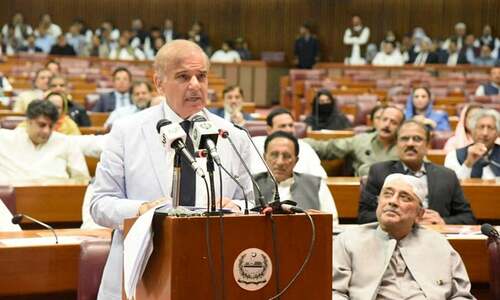How does artificially keeping the petrol prices at Rs150 per litre affect our economy? Let’s break it down into the simplest of terms.
Pakistan doesn’t have oil wells so obviously it has to import. At the time of writing this article, crude oil stood at almost $111/barrel. Meanwhile, the Russia-Ukraine conflict has put a huge strain on global supplies. Sanctions on Russia coupled with the reluctance of the Organisation of the Petroleum Exporting Countries (Opec) to increase oil production has curtailed output levels.
Taking into account the cost of import, petroleum levy, dealer margins, refinery costs and exchange rate fluctuations, petrol price should be around Rs300 per litre or more but the price before the series of hikes was about half that at Rs150 per litre. This is where government subsidies come into play.
Subsidies are adored by the public without understanding the consequences, which is that they add severely to the increasing government expenditures. Tax collection in Pakistan is still below par so the gap between expenditure and revenue explodes as a result.
Every citizen in Zimbabwe was a trillionaire at one point because of how worthless its currency had become — without the increase in petrol prices, Pakistan could have walked on the same path
The government then has to borrow locally and make frequent interest payments from tax revenue which leaves no funds for developmental projects, growth-related investments or job creation which stagnates the economy. Since the government controls the money supply you may be wondering why it can’t just print more money to pay off its debt or make interest payments.
That shouldn’t be a problem then. The government should keep on giving subsidies from tax money and accumulate a higher national debt and then just print money to write it off.
Germany did that after World War I. It led to hyperinflation which made the German currency absolutely worthless. Zimbabwe did that just recently. The inflation was so disastrous they had to introduce a 100 trillion Zimbabwean dollar note which could buy as little as a chicken burger. Every citizen in Zimbabwe was a trillionaire.
The explanation is that when you print too much money, there is too much money circulating in the system but the output of goods and services is the same. Everybody will have a lot of money, and everyone will be spending a lot of money. Increased supply of currency and limited resources will cause prices to rise drastically and exponentially decrease the purchasing power or the value of the currency.
We need to understand that in economics there are no solutions, only trade-offs. There is either a short-term gain at long-term costs, or long-term gains that cause difficulties in the short turn.
Pakistan could either pursue a contractional fiscal policy: decrease government spending through the elimination of subsidies and increase taxes that would keep tabs on inflation by reducing disposable incomes. Or, the other option is to adopt a short-term policy to appease voters and put inflation on the backburner by opting for an expansionary fiscal policy: increase government spending, of which subsidies are a major constituent, and introduce tax cuts that would allow growth but exacerbate the already precarious state of inflation.
Unfortunately, Sri Lanka chose to do the latter. The domestic and foreign earnings of Sri Lanka took a huge tumble in the wake of Covid-19. To stimulate its plummeting growth rates, the government decided to run huge fiscal deficits.
Their public debt-to-GDP ratio worsened to 119 per cent, meanwhile, wages and price controls became the cornerstone of their economic decisions, months before the inevitable default. Inflation caused as a result of the deficit spending devalued their currency miserably against the US dollar which subsequently led to the drainage of foreign reserves to artificially keep the currency afloat. This proved to be the final nail in the coffin. Pakistan must take the long-term route towards economic prosperity to avoid walking on thin ice.
The inflation caused by subsiding petrol at the Rs150 level would have led to an inflation tax which is a kind of penalty on the cash you hold as the rate of inflation rises. Every rupee you earn and save would be worth less than what it used to be because our currency’s worth would have depreciated.
Inflation tax is not apparent or visible at the surface but it eats away at your money like a termite. Buying petrol at Rs249 per litre allows some preservation of the purchasing power of your money. That’s the beauty of economics.
The author is a finance graduate from Nust Business School
Published in Dawn, The Business and Finance Weekly, July 13th, 2022















































